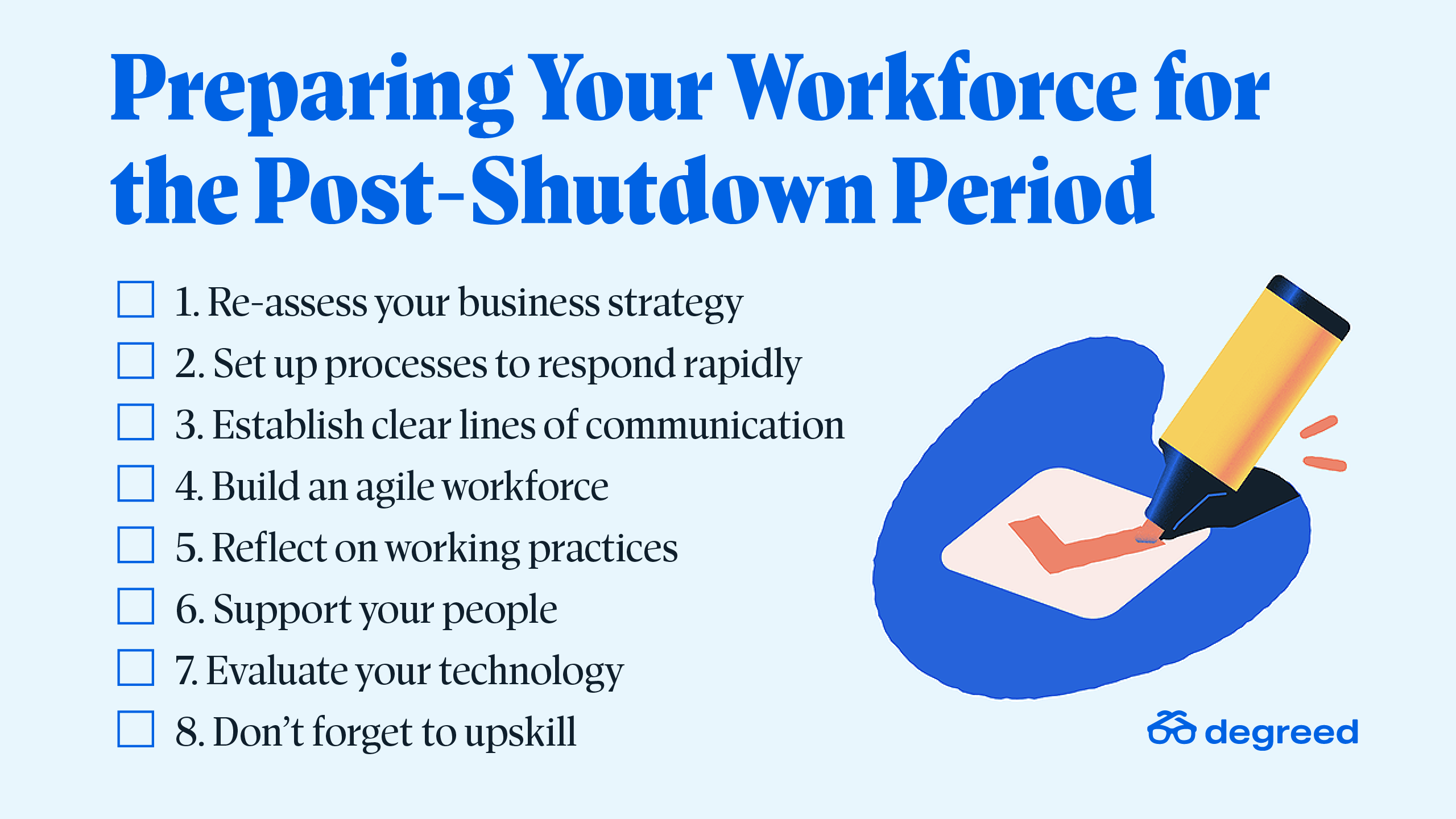We’ve required a lot out of employees over the last few months. Millions of people worldwide overhauled their practices to work remotely, with 88% of office staff working from home during the pandemic. Although many are keen to have the flexibility to work from home in the future, just 16% want to say goodbye to the office forever.

Now that restrictions are easing in many countries, companies may be considering a return to the office. But after so many months working remotely, how do you shift your business back to the office while keeping employees safe and informed? And what can we learn from our remote working experience that could be integrated into future company culture?
1. Reassess Your Business Strategy
Take a closer look at what immediate challenges your company may face with new restrictions, like office size. You might need to make some changes in the workspace to allow for workstations to be farther apart.
If this is not possible, consider introducing a schedule for your employees to work on. Ensure you have sanitization and a deep clean of the office scheduled before asking people to return.
Aside from challenges, look at the opportunities that have arisen from recent events. With so many people working remotely, now might be the time to introduce more flexible working or downsize your office space altogether.
2. Set Up Processes to Respond Rapidly
The coming months and years will be volatile. Develop processes to constantly monitor for external changes, and prepare plans to pivot rapidly as the situation changes. Think about creating a rapid response team to monitor any changes in government guidance and look at countries that are slightly ahead in the timeline. What have they done successfully?
Given the rapid development of technology to monitor the spread of the virus, you might want to consider contact tracing or other technology to protect your workforce but always with safeguarding employees’ personal data in mind.
3. Establish Clear Lines of Communication
Over the past few months, we have all introduced new communication tools into our routine. Transparency will be key to alleviate any concerns and prepare your workforce to return.
Keep in mind that employees who have adjusted to remote working and those coming back from furlough will need time to readjust to an office environment, including a shift in mind-set and an adjustment in work habits.
Use the communication tools at your disposal to both gather feedback from your employees and communicate to them about everything at their disposal during the transition. This will allow you to stay on top of the challenges they encounter in this period.
4. Build an Agile Workforce
Having a workforce that can rapidly respond to market changes will be a competitive advantage. Consider your contingent talent, such as contractors, freelancers, and alumni, and how they can add value to your business. They can also help take some of the stress and pressure away from your employees by shouldering the workload while they readjust to the office routine.
Another thing to consider is how to improve cross-departmental collaboration, knowledge sharing, and upskilling. Returning to the office is a good time for people to share their tips and advice. Some might have found simple ways of dealing with the return to the office, while others might share their experience of remote working and the new skills they have picked up during that time.
5. Reflect on Working Practices
Being away from the office has allowed employers to reassess some of the working practices they used to have. Before returning to the office, decide which ones are well-suited to your organization and desired by your workers. Can you replace a meeting with a video call? Maybe your employees prefer working remotely or would like to have the flexibility of remote and on-site work.
Now is the perfect time to cement the remote working practices your workforce has spent the last few months finessing. Make sure that experience does not go to waste.
6. Support Your People
It is, and will continue to be, an unsettling time, and your employees should feel confident and safe going back to the office. Consider how your organization can support your workers’ physical and mental health, and offer your workforce a robust support system, from providing personal protective equipment (PPE) to financial advice, online counseling, or mental health apps.
Make sure to ask your employees how they feel about going back. This will allow you to scope out your workforce’s sentiment regarding returning to the office, including any potential anxiety, and will help you build trust between management and employees.
7. Evaluate Your Technology
Assess how effectively your tech stack has supported your business during this time and whether you need to invest in other tools to empower your distributed and agile workforce. Now is the time to closely look at which tools have and haven’t worked for you while the company was working remotely. This, however, is not only about your communication platforms.
Reflect on the challenges you had to overcome when moving to remote working. Did you experience a data breach? Has your team struggled with access to key documents? If so, you may consider updating your software or introducing new tools to support the company.
8. Don’t Forget to Upskill
Fifty-four percent of people will require some form of upskilling by 2022. This hasn’t stopped because of the shutdown. Now is a great time to assess what skills you need in your workforce to ramp up production again.
Start by assessing whether your employees have taken online learning opportunities while working remotely, and map those skills. In the long term, look at what skills your organization will need in 3–5 years, and start preparing for them now. Encourage employees to learn by providing regular training sessions and online courses that would be both relevant to your company and interesting to them.
